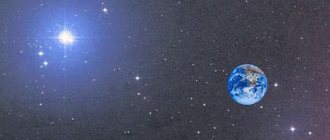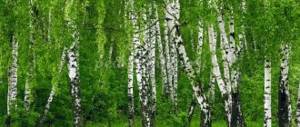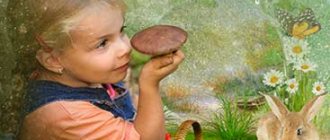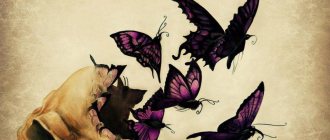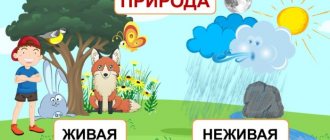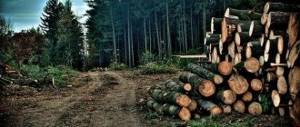People who study ecosystems are called ecologists. Anyone interested in how animals and plants interact with each other and the environment is an ecologist. Basic information about ecosystems is important to understand, and we often hear the word ecology because everyone lives in ecosystems and relies on them to survive.
Definition of an ecosystem
Ecosystems are any area where living things such as plants and animals interact with non-living things such as soil, water, temperature and air. An ecosystem can be large, like the entire planet, or small, like tiny bacteria on the skin.
Ecosystem types
- lakes;
- oceans;
- Coral reefs;
- mangroves;
- swamps;
- forests;
- jungle;
- deserts;
- city parks.
Animals and plants interact with the nonliving environment in many ways. For example, plants need soil, water and sunlight to cook and grow. Animals also need to drink clean water and breathe air to survive.
In ecosystems, living things interact with each other. For example, plants and animals eat each other to live, insects and birds pollinate flowers or disperse seeds, which helps plants reproduce, and animals use plants or other animals to remove parasites. These complex interactions make up an ecosystem.
Lesson of the surrounding world, grade 1 “Ecology-science of the home. Creating a lapbook”
—Who resolved their dispute? (Wind.)
-What did he tell them? (That they are all in charge.)
- Why are they all the main ones? (They are all necessary for living beings.)
— That’s right, the sun, air, and water are equally needed by plants, animals, and people. LET'S INSERT INTO POCKETS "WHO IS MORE IMPORTANT AND MORE NECESSARY"
SLIDE(connections)
Various living beings are connected with inanimate nature and with each other. And man is also connected with the nature around him. ecology studies all this
.
- Guys, what do you think now, why do we need the science of “ Ecology ”
?
Great science provides great help to people. Ecology
stands guard over our health, fighting for clean air and water. This science teaches how to protect against pollution and control, and explore relationships.
You and I are convinced that everything on our planet is interconnected. How can we call our planet earth? (natural home)
Absolutely right. There is so much in this wonderful house. (SLIDE)
Environmentalists say: “We need to take care of the environment, the Earth, because this is our home. And the house must always be taken care of and protected.” The world around us, the Earth is our Green Home.
BUT There are alarming signals on our planet (SLIDE).
What kind of signals are we hearing? (distress signals, requests for help, SOS signal)
– Previously, we did not listen too carefully to the distress signals that nature gave us. We will distribute the garbage into containers. POCKETS.
And now, the forest is sending us this SOS signal. Listen to its story.
- Once upon a time there lived a forest.
- Birds lived in the forest. They sang cheerfully and cheerfully.
– Animals also lived in the forest.
“But one day a man came to the forest. He built factories, factories, houses, schools, and roads next to the forest. He didn't have enough place to live.
“Then the man began to cut down the forest.
“He started lighting fires, and the fire destroyed the forest.
– Factories and factories dumped waste into rivers, forest lakes and polluted the water in the forest.
– Smoke from the chimneys of factories and exhaust fumes from cars on the roads poisoned the air.
– Vacationers polluted the nature of the forest with garbage (bottles, rubber, paper).
– There was nowhere for the poor animals to live. And they left our forest far away. There is only one forest left. It became sad and scary in the forest.
“And then the forest turned to us asking for help.
“Help us bring back its former beauty!” Look at the SLIDE. How man destroys and how he should protect nature.
DISTRIBUTE THE “HARM” AND “BENEFIT” CARDS IN THE POCKETS. Nature smiles and nature is sad.
Rules of behavior in nature:
• clean up all trash after yourself.
• be careful with fire.
• do not pick flowers.
• do not try to get close to a wild animal.
PUT ENVIRONMENTAL LITERACY CARDS IN YOUR POCKETS: READ THEM. IN THE NEIGHBORING POCKET - RULES OF BEHAVIOR IN NATURE IN VIDEO ECOLOGICAL SIGNS.
The importance of ecosystems for humanity
Ecosystems are important to people because they support life and make people's lives more enjoyable. Plant ecosystems produce oxygen for animals to breathe. Clean, fresh water is essential for drinking and growing food in healthy soils. People also use trees, rocks and soil to build houses for shelter and protection.
Ecosystems contribute to the development of culture. Throughout history, people have written poems and stories about the natural world and used plants to make dyes to decorate clothes and buildings. People also use minerals and stones such as diamonds, emeralds and shells to create beautiful jewelry and accessories.
Even the technologies that people rely on today are products of ecosystems. Computer components, such as lithium batteries, are obtained from natural sources. For example, liquid crystal displays (LCDs) are made of aluminum and silicon. Glass is used to make fiber optic cables that bring the Internet into the home.
Ecology lesson in 1st grade class hour (1st grade) on the topic
Lesson objectives.
- Teach children to understand the processes occurring in nature.
- Show the dependence of all living things on plants.
- Reveal relationships.
- Show the importance of animals in nature (pollination, distribution, link in the food chain).
- Develop respect for all living things.
Equipment. 1. Poster with a picture of a tree (bird class, animal class, fish class, insect class)
Move. Introductory part.
U. Let's smile at each other, I'm glad to see your faces, your smiles again, and I think that today's lesson will bring us the joy of communicating with each other. What do you want today's lesson to be?
Announcement of the topic.
Today in class we will talk to you about the meaning of animals in nature.
We're in trouble. We can't start our lesson. At our Ecokolobka today
looking very confused. What happened?
(Children establish that objects of living and inanimate nature are mixed up).
U. Before we put things in order, let's remember: How does living nature differ from inanimate nature? (Every living thing breathes, eats, grows, reproduces and dies). Children distribute the pictures into groups.
Conclusion. Animals and plants are part of... living nature.
U. Let's go! We are on the right track! (Eco-bun takes on a cheerful look)
Living and inanimate nature are closely interconnected. Let's prove it.
For a plant to live, it must... breathe. What do you know about plant respiration?
(Like all living beings, plants breathe, inhaling oxygen and exhaling carbon dioxide).
U. Like all living organisms, a plant must... eat.
(As the explanation progresses, the teacher pins on the board an image of a tree, the sun and a sign with the words: carbon dioxide, oxygen, photosynthesis (the process of formation of nutrients), water, mineral salts).
By feeding, plants saturate the air with oxygen, which makes it possible for other living organisms to breathe.
By feeding itself, the plant is the only organism that makes food from the air for others, that is, it forms nutrients.
U. Name the parts of plants where nutrients are located (these are roots, trunk, branches, leaves, flowers, seeds, fruits).
Using the remaining representatives of wildlife, we will create a food chain.
Seeds - mouse vole - fox
Let's break one link...
There are again a litter of mice in the fields, And all with a good appetite - Look at that, oats, barley, wheat They will eat in one sitting.
But with the addition of a family, you can also congratulate the fox. Foxes need breakfast and dinner will come in handy too.
This is how the field is protected by its inhabitants in the ecosystem, and the Forester will put on a fox hat for his wife on New Year’s Eve.
So, in short, it is given to the Ecological system to maintain itself in a well-fed, healthy body.
Unless a person starts acting like a crazy destroyer. Read which output of the Eco-kolobka fits our power circuit. (Children read conclusions from the notebook and prove their significance).
Ecokolobka's conclusions.
- Everything is connected to everything.
- Everything has to go somewhere.
- Nature knows best.
- Nothing comes for free.
Conclusion. Animals are a link in the food chain that cannot be destroyed
U. And there are a huge number of living beings.
Animals surround us everywhere, Jump, swim, fly in the sky, Hidden in the ground, scurrying under our feet. How many of them live next to us? Together we will collect all the leaves, And we will name them like animals.
(The guys have pieces of paper on their desks with pictures of various animals)
What chaos look! Try it - find a Fat Frog, a Squirrel or a Fly. For this, children, you need to hang your leaves on the branches. To a fish - a fish, to a bird - a bird. Then everything will become clear.
(The teacher opens an image of a tree, symbolizing the animal world.)
Each leaf has its own branch: This is for a beetle, a mosquito, an ant. There are many relatives here and many acquaintances. This is a big family... of insects.
(Children who have an insect on their leaf attach their leaf to an insect branch).
Branch for the beast... Branch for the birds... Branch for the fish...
In chorus. All this together... the animal world.
U. We have forgotten the most intelligent bipedal representative of the animal world - man.
Problematic situation.
U. Guys, do random things happen in nature? Take a look, which class is the most numerous in the animal kingdom? Why? The table will help you answer this question. (Children look at the table
“Plant pollination by insects”).
U. The modern plant world consists mainly of flowering plants. Even cows walk around plants with bright flowers, as if they understand that they are advertising themselves to bees and butterflies, that they need to bloom and leave seeds.
Conclusion.
In nature, in a strict form, a product necessary for everyone, goes its own way. Here a motley moth sits on a green stem, drank nectar from all the flowers, pollinated them and is ready to go! But then I got caught. - My God! Meadow bird for breakfast. And she has a nest in the grass and a bunch of chicks in the nest, and, of course, their droppings provide food for the grass.
Establishing relationships.
U. The more insects...(the more plants). The more plants...(the more oxygen). The more plants...(the more food for all living organisms).
Physical exercise.
In chorus.
Let's walk slowly through the meadow, And say “hello” to every flower. I have to bend over the flowers, not to pick or cut them, but to see their kind faces and show them a kind face.
(Raise your hands to the sun, feel its warmth. Say thank you to all living things).
U. Our guests are representatives of each class (children’s performances).
Class of birds. Imagine, guys, whole families of birds - swallows, swifts, woodpeckers, larks, orioles, finches, cuckoos, nightingales - feed on insects.
Each swift catches about forty thousand insects per day. And the well-known tit eats as much food per day as it weighs. And in a year there are approximately 7.5 kg of insects.
Animal class. Many small rodents, especially voles, rats, and gophers, enjoy crawling insects with pleasure. Even predators such as wild cats, foxes, and bears love insects. And don’t wolf cubs, still suckling their mother’s milk, begin their journey by hunting for insects? Undoubtedly, many baby animals do this.
Class of fish. Almost half of the different fish that inhabit fresh water bodies hunt only insects. Mainly for the larvae of mosquitoes, dragonflies, and beetles. And adult insects falling into the water will not end up drowned, but will end up in the mouths of fish.
Conclusion. Insects are food for fish, birds, and animals.
Reading the text by G. Snegirev “Who Plants Forests.”
G. Snegirev
Who plants the forest?
There were only fir trees across the river. But then oak trees appeared among the fir trees. They are still very small, only three leaves stick out from the ground. And oak trees grow far from here. But the acorns couldn’t have flown with the wind? They are very heavy. So someone is planting them here. Who? Once I was walking back from hunting, I saw a jay fly low and low. I hid behind a tree and began to spy on her. The jay hid something under a rotten stump and looked around: did anyone see it? And then she flew to the river. I approached the stump, and between the roots in the hole lay two acorns: the jay hid them for the winter. So this is where the young oak trees came from among the fir trees! A jay will hide an acorn, and then forget where it hid it, and it will sprout.
- What did you read the text about?
- How did the jay carry the oak seeds?
- Who else can carry plant seeds?
Conclusion. All animals take part in the transfer of plant seeds.
.
